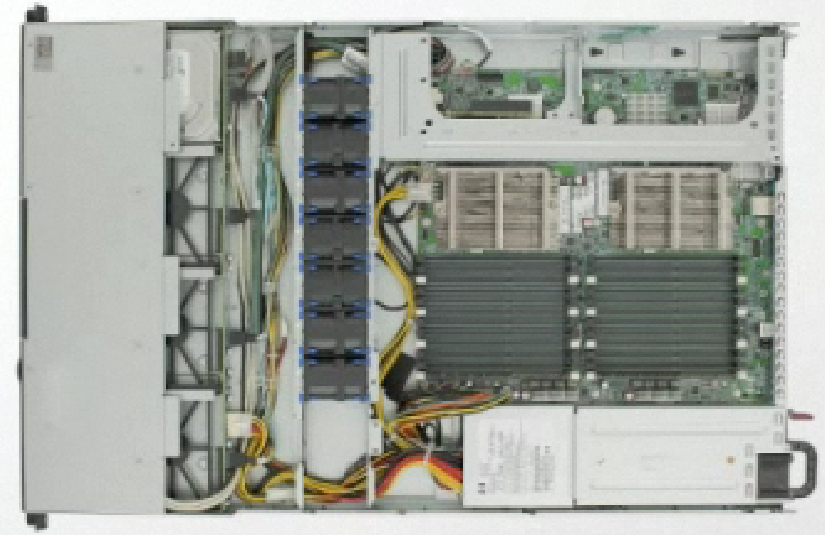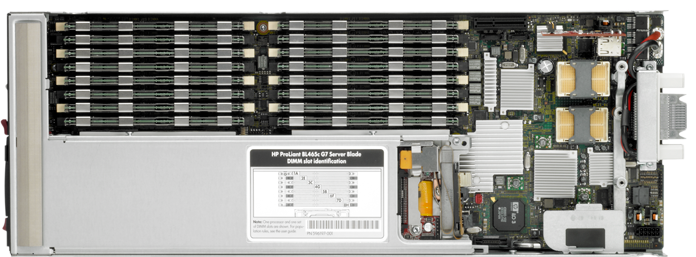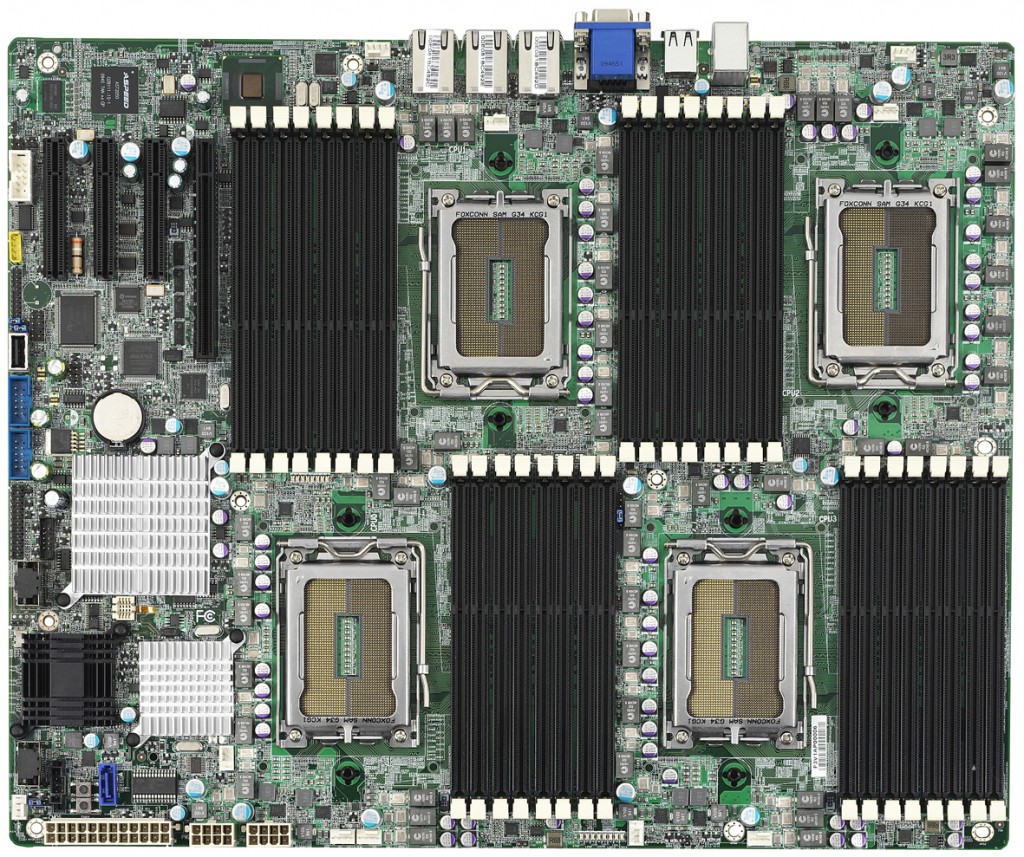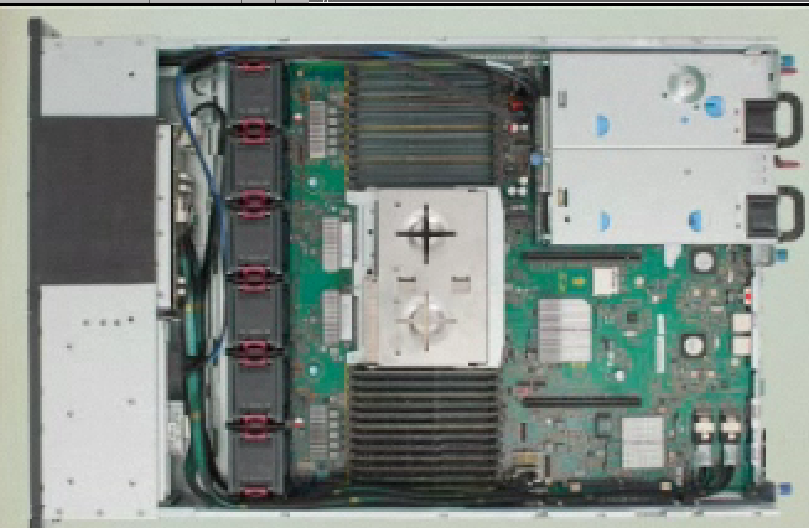I commented in response to an article on The Register recently but figure I’m here writing stuff might as well bring this up to.
Unless you’ve been living under a rock and/or not reading this site you probably know that AMD launched their Opteron 6100 series CPUs earlier this year. One of the highlights of the design is the ability to support 12 DIMMs of memory per socket, up from the previous eight per socket.
Though of all of the servers that have launched HP seems to have the clear lead in AMD technology, for starters as far as I am aware they are the only ones currently offering Opteron 6100-based blades.
Secondly, I have looked around at the offerings of Dell, IBM, HP, and even Supermicro and Tyan, but as far as I can tell only HP is offering Opteron systems with the full 12 DIMMs/socket support.The only reason I can think of I guess is the other companies have a hard time making a board that can accommodate that many DIMMs, after all it is a lot of memory chips. I’m sure if Sun was still independent they would have a new cutting edge design for the 6100. After all they were the first to launch (as far as I know) a quad socket, 2U AMD system with 32 memory slots nearly three years ago.
The new Barcelona four-socket server comes with dual TCP offloading enabled gigabit NIC cards, redundant power supplies, and 32 DIMM slots for up to 256 GBs of memory capacity [..] Half the memory and CPU are stacked on top of the other half and this is a rather unusual but innovative design.
Anyways, if your interested in the Opteron 6100, it seems HP is the best bet in town, whether it’s
- Low end: HP DL165 G7 (2 socket, 24 DIMMs)
- Mid range: HP DL385 G7 (2 socket, 24 DIMMs)
- High End: HP DL585 G7 (4 socket, 48 DIMMs)
- Scale out: HP SL165z G7 (2 socket, 24 DIMMs)
- Dual socket blade: HP BL485c G7 (2 socket, 16 DIMMs)
- Quad socket blade: HP BL685c G7 (4 socket, 32 DIMMs)
 Kind of fuzzy shot of the HP DL165 G7, anyone got a clearer picture?
Kind of fuzzy shot of the HP DL165 G7, anyone got a clearer picture?
 HP BL685c G7 – I can understand why they couldn’t fit 48 DIMMs on this blade(Note: two of the CPUs are under the hard disks)!
HP BL685c G7 – I can understand why they couldn’t fit 48 DIMMs on this blade(Note: two of the CPUs are under the hard disks)!
 HP BL465c G7 – again, really no space for 24 DIMMs ! (damnit)
HP BL465c G7 – again, really no space for 24 DIMMs ! (damnit)
 Tyan Quad Socket Opteron 6100 motherboard, tight on space, guess the form factor doesn’t cut it.
Tyan Quad Socket Opteron 6100 motherboard, tight on space, guess the form factor doesn’t cut it.
Twelve cores not enough? Well you’ll be able to drop Opteron 6200 16-core CPUs into these systems in the not too distant future.


Nate- I appreciate that you champion the little guys, 3par and Extreme have both been technology choices i’ve made in the past. However, this AMD thing… im not convinced. The 6100 is a small jump to 12 DIMM’s per Socket, the Intel Xeon 7400 does 16 DIMM per socket. IBM i’m sure will eventually have a solution for AMD 12 DIMM, as they already do 16 DIMMs for Intel.
AMD has failed me in at least 2 production environments on HP and IBM hardware stacks. The performance has been pathetically slow in comparison to Intel, unless you have just the right workload that can dump large amounts of data into the bus to be processed regularly. Not a lot of typical OLTP or Web workloads have those type of use patterns.
Not that Intel is a saint either… but AMD just feels like a snooze… Where is the innovation…. (although I would argue Intel isn’t innovating much either these days).
Comment by Justin — September 9, 2010 @ 9:38 am
At this point I mostly agree things are evolutionary rather than revolutionary, I mean you can’t expect a real revolution to occur very often.
The biggest thing I see going for the 6000 series is the common chipset between dual and quad socket systems, slashing the costs of going quad socket. Being able to get 48 cores in a lower cost platform for hypervisors to me is really a big boon as it gives the hypervisor many many more options for scheduling SMP workloads.
[update – just came across this this morning – http://sites.amd.com/us/Documents/48454A_AMDOpteron_6000series_2P4P_wp_Web.pdf ]
The Intel 7400 is pretty old at this point, myself I wouldn’t want to use it any more than I’d want to use an Opteron 8000 system at this point(that is assuming I was buying something new). The 7500 is of course out though costs quite a bit more, since Intel has different chipsets for quad socket(and they have higher margins on the 7500 vs the 5600 series)
The “revolutionary” stuff from AMD at least I think came earlier in the decade with the multi core, hypertransport (based off of Alpha designs I believe), integrated memory controller, x86-64 etc. All of which Intel has caught up to at this point of course(though it did take them some time!)
Really I think the only thing that has allowed Intel to keep pace with the innovations at AMD over the past few years is their scale and their ability to migrate to smaller manufacturing processes faster (mainly because it’s a really capital intensive process).
At the end of the day AMD is focused much more on efficiency and value, and Intel is more focused on performance.
It’s certainly true that since I heard about the Opteron 6100 originally my views on AMD stuff has really improved a lot, they are raising the bar once again. I was not happy with AMD’s original decision to not do a quad core chip by merging two dual core cpus, that was a really poor choice but fortunately they have learned from that mistake!
Thanks for the comment! And of course it’s good that there are options out there, I mean if it wasn’t for AMD really Itanium would be everywhere by now, and we all know how well Itanium has done in it’s market segment, I think everyone agrees it hasn’t lived up to expectations.
Comment by Nate — September 9, 2010 @ 10:48 am
Yes, the 7400 is a bit long in the tooth, and the 7500 and 5600 series are coming quickly but as you said cost a premium. I recently toured Intel’s Portland datacenter, and the fact that its just one of 60+ datacenters worldwide!
Ahhh Itanium… you know who is most upset about it not doing well…. Intels accountants. 🙂 Its really hard for anyone to get traction on anything but the x86 architecture these days. I’m really impressed with IBM’s P series, but you don’t see it in the field all that often. Same with Itanium, Sparc, Alpha they were all superior in their day and all have fallen to X86.
Comment by Justin — September 9, 2010 @ 10:52 pm